List of Authors
>>About this blog
Recent blog post
|
[Akira Makibuchi / Sharakusai]
January 21, 2014 09:00
I walked around Ginza using the recently released sightseeing map application "Tokyo Chuo-ku Town Walking Map". Even if you don't have a guidebook or a large map, it's a convenient free app that allows you to get information at hand and expand the range of use if you use a smartphone or tablet device.
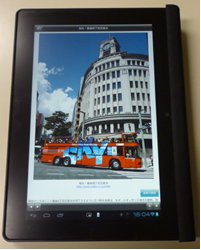 Choose Ginza for the area. Follow the picture map of Mie Takahashi's fun illustration, and tap the camera mark icon where you want to see it to display photos and commentary (the photo shows the screen at Ginza 4-chome intersection). It is marked with a lot of history, sightseeing, shopping, and gourmet spots. "Matsuzakaya" in the pictorial map also has a kind comment saying, "It will be reopened in 2017 for redevelopment." Choose Ginza for the area. Follow the picture map of Mie Takahashi's fun illustration, and tap the camera mark icon where you want to see it to display photos and commentary (the photo shows the screen at Ginza 4-chome intersection). It is marked with a lot of history, sightseeing, shopping, and gourmet spots. "Matsuzakaya" in the pictorial map also has a kind comment saying, "It will be reopened in 2017 for redevelopment."
This time, when you touch the "old map", it switches to Edo Kirie map. Since it is the Owariya Seishichi version of 1849 (1849), the color is good and easy to see. If you select a normal map (standard map), you can also check the current location with location information.
If you choose the "Recommended Route" menu, "Hanagata" Ginza dance with instrumental accompaniment dance with instrumental accompaniment course", "Good luck in Ginza! ? There are three kinds of courses, "Hachicho Shrine Tour". When you touch the course you want to walk, the route will be displayed with an arrow from the start mark and will tell you to the goal. If you try various things, it will be interesting to walk around Chuo-ku.
This time, I used an Android OS tablet terminal, which was connected to the Ginza-free Wi-Fi "G-FREE", which extended to Harumi-dori St. @ Akira Makibuchi
◇For details of this app, please visit the Tourism Association website. >>Click here. In addition, TV public information of Chuo-ku HP "Konichichi is Chuo-ku" No.293 (broadcast on January 12-17, 2014) >>It's also introduced here.
[Tachibana]
January 15, 2014 14:00
Every day, people tend to stay at home due to the cold, but if you take a stroll on a sunny day, how about the Hamacho Ryokudo?
"Hamacho Ryokudo" begins opposite the exit of Hamacho Kiyosubashi in the capital city.
If you dive through an arched tunnel, you will find an almost straight green road sandwiched between roads on both sides.
This is a green road built by reclaiming the place where the Hamacho River (also known as the "Midori River" from the name of the bridge that was built) used to flow.
As you walk north, you will encounter amazake Yokocho, where you will find a statue of Benkei Musashibo, famous for its Kanjin Book (the place where one of the treasure chests of Chuo-ku last year's treasure hunts was located).
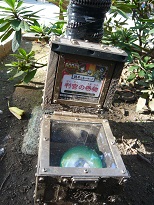
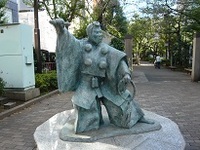
If you go further, there is a monument near the entrance on the north side of the "Place of Rehabilitation of Chinese Medicine".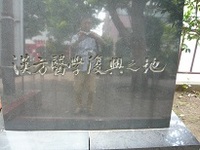
Exit this mouth and pass by the side of the Nihonbashi Fire Station Ningyocho Sub-Branch, and you will come to "Konza-dori" connecting the Hisamatsucho Intersection and Ningyocho Intersection.
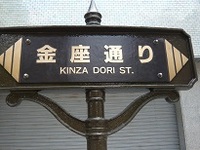 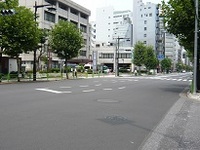
"Koganza-dori" was built to cross the Hamacho River.
And just on the other side of "Konza-dori", there is a monument of "Ogawa Bridge Origin" along with Hisamatsu Police Station.
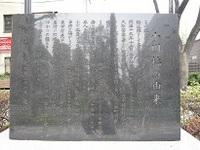
The origin of Ogawa Bridge is that a pistol robbery occurred in Bakurocho in December 1886, and a culprit discovered near Tachibana-cho (currently Higashi-Nihonbashi 3-chome) by Hisamatsu Police Station Ogawa on the way to rushing and seriously injured He was tracked to the banks of Hamacho and caught the man. The criminal had 80 exils, and five were violent criminals killing people.
However, inspector Ogawa (2nd grade advanced due to his arrest) died two years later due to the wound at this time. Therefore, we regretted the precious death of the assistant inspector, named the bridge next to the Hisamatsu Police Station Ogawa Bridge, and decided to leave the immortal achievement for future generations.
I often heard this story from my grandparents born in the Meiji era, but I am a little surprised that there was a violent crime of pistol robbery (although he had even a sword) in Meiji period, but I thought that the bravery of policeman Ogawa who confronted this violent crime alone would have been a great officer for children.
[Silver]
January 10, 2014 09:00
In December, the event of the Chuo-ku Cultural and International Exchange Promotion Association was held at Tsukiji Social Education Center.
This time, we wanted to promote international exchange through sports and spread it.
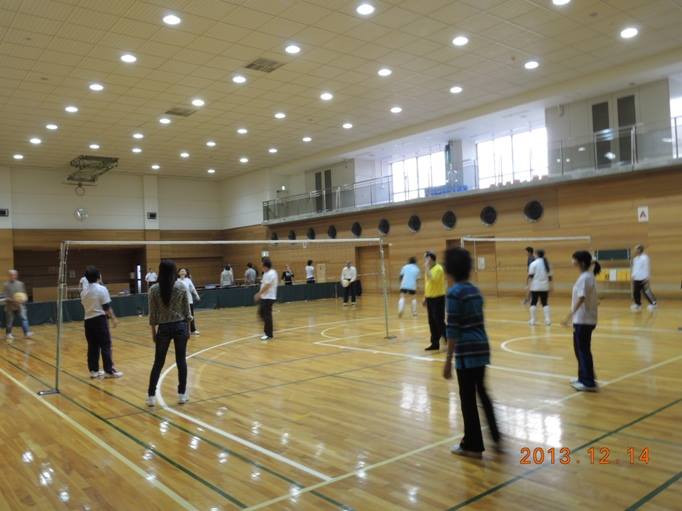
I also sweated soft volleyball and ping-pong with young people.
Volleyball is the first time in 16 years and ping-pong is the first time in 30 years.
When I receive a ball in volleyball, I don't know what to call out.
Me, you were connecting the ball , but as the play continued, it felt like teamwork was sprouting. , but as the play continued, it felt like teamwork was sprouting.
I felt strongly that I would like to participate in these activities in the future.
The next day, when I was walking around Tsukiji 6-chome, a foreigner seemed to be looking for something with a smartphone.
When I asked May I help you? He said he was looking for a sushi restaurant in Tsukiji 5-chome.
While talking while walking, he said that he came from Santa Catalina, Brazil for sightseeing.
I wondered if international exchange begins with a familiar word. I took a picture in my memory,
It was a very nice couple.
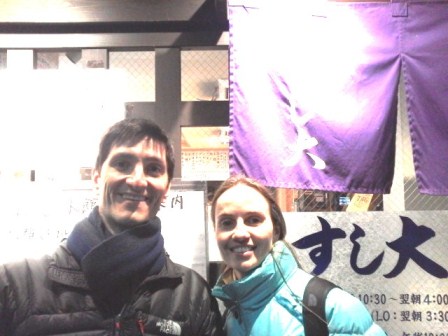
The Tokyo Olympic Games 2020 has been decided. You can easily speak foreign languages with NHK language programs.
There is an environment where you can learn. Now, why don't you prepare for hospitality for 2020?
Click here for information on the Chuo-ku Cultural and International Exchange Promotion Association. I'm thinking about a fun event in January.
http://www.chuo-ci.jp/salon/
Ginzo
[Silver]
January 9, 2014 14:00
At 10:30 on January 4th, when I tried to cross Nihonbashi to enjoy the Nihonbashi Shichifukujin pilgrimage, a fire extinguishing ladder was set up in front of Eitarou Sohonho's shop, and the wonderful skill of ladder riding was demonstrated. Was being done.
I rushed to rush and took some pictures. It is called "Edo Fire Fighting".
That's! Even though I thought it was an illusion of my eyes, I was distracted by the brilliant technique and the subsequent woodwork.
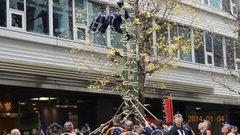
At the storefront, the owner of Eitaro Sohonho, who received a wonderful greeting, and the reception of the shop, also entered the hall, and I felt "the best of Edo".
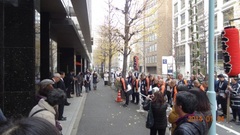
While he was busy, he asked, "Is that people a fire brigade?", He told me, "Is it an Edo fire department."
Well? While thinking, when I searched on the Internet, my activities were introduced on the website.
Regarding activities, the Nihonbashi area was described in this way.
"It is a New Year's annual event, but on January 4th, Nihonbashi Mitsukoshi and Takashimaya are performing woodworking, maki, and ladder riding as New Year's greetings in line with the first sale to celebrate the New Year. ・・・・」
Oh, the depths of Nihonbashi are deep. I thought I had to study hard.
Click here for more information about the Edo Fire Department. The official name is the Edo Fire Memorial Association.
Splendid activities such as preserving the tradition of Tobi fire extinguishing that has continued since the Edo period and passing on the woodwork of traditional performing arts are introduced along with history. I admired you.
http://www.edosyoubou.jp/
[Mr.Chuo-ku]
January 6, 2014 14:00
I think some people have seen the big Kadomatsu of Ginza Mitsukoshi during the New Year.

The Kadomatsu of Ginza Mitsukoshi is Kanto-style, with a long Wakamatsu arranged around three bamboos (using "zundo"). The lower part is made of general straw and is wrapped in cedar skin.
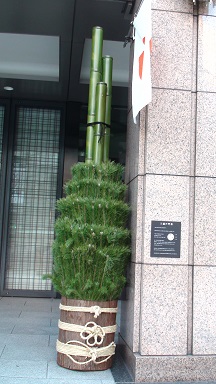
The binding of this cedar skin roll is three-tiered, three-fold, five-fold, and seven-fold, in order from the top, and this is due to Mitsukoshi's trademark "Koshi". It is said that there are 3, 5, 7, and 7, depending on the number.
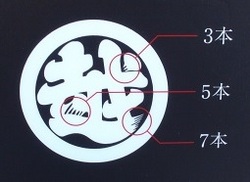
The knot is made of rough rope from the top in a shape that resembles a happy "crane", "ume" and "tortoise shell".
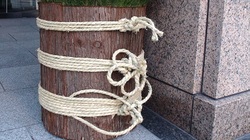
1
|
Links
|
 Choose Ginza for the area. Follow the picture map of Mie Takahashi's fun illustration, and tap the camera mark icon where you want to see it to display photos and commentary (the photo shows the screen at Ginza 4-chome intersection). It is marked with a lot of history, sightseeing, shopping, and gourmet spots. "Matsuzakaya" in the pictorial map also has a kind comment saying, "It will be reopened in 2017 for redevelopment."
Choose Ginza for the area. Follow the picture map of Mie Takahashi's fun illustration, and tap the camera mark icon where you want to see it to display photos and commentary (the photo shows the screen at Ginza 4-chome intersection). It is marked with a lot of history, sightseeing, shopping, and gourmet spots. "Matsuzakaya" in the pictorial map also has a kind comment saying, "It will be reopened in 2017 for redevelopment."













